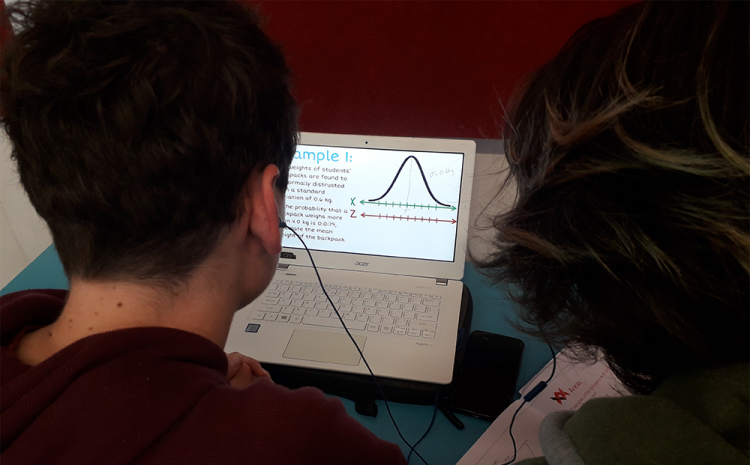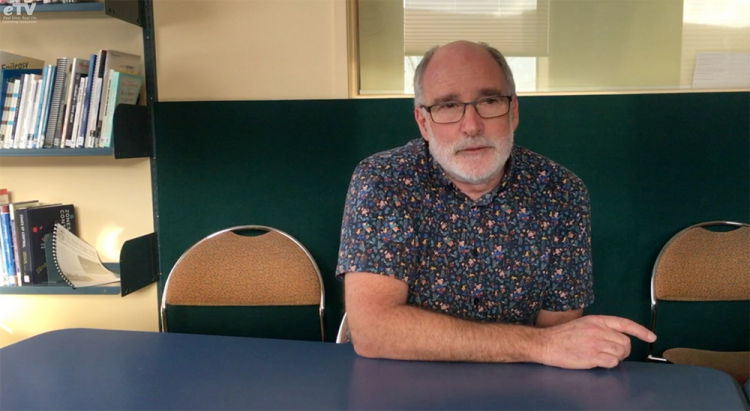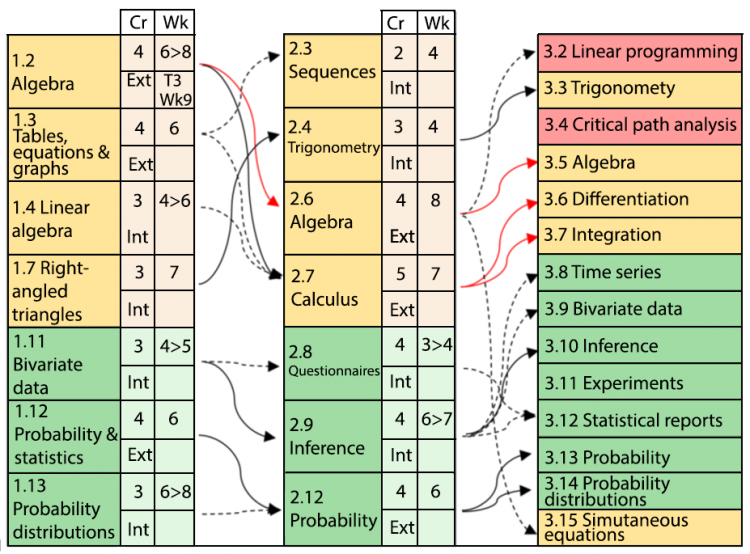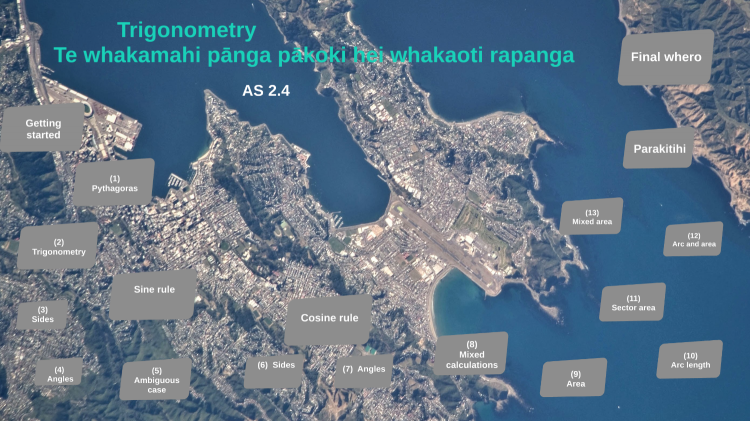Flipping mathematics learning at Wellington High School
Tags: Flipped learning | Mathematics and statistics | Secondary |
At Wellington High School, students in years 11 and 12 are treated as a single cohort for mathematics. They have moved to a flipped learning approach.
The flipped approach
Wellington High School maths teacher, Bernie Wills describes the new way classes operate to accommodate personalised learning and assessment.
Why take a flipped approach?
“Getting feedback from students? Don’t ask if you don’t plan to change anything.”
– Bernie Wills, Wellington High School
Two maths teachers decided that they had concerns about their teaching and asked students for feedback on the senior maths courses. This highlighted issues with how the courses were designed and delivered. In 2019, the department initiated changes to:
- improve students’ engagement and success by making assessments and learning contexts more relevant and effective for students
- prevent students rote learning content year after year to "credit collect" achievement standards instead of really understanding and enjoying the learning area in depth
- break the cycle of frequent assessments that demotivated many students
- provide more opportunities for students to develop the key competencies and values aspects of The New Zealand Curriculum
- focus on getting to know individual students and their needs instead of "teaching to the middle".
As part of NZQA’s innovative internal assessment case studies Wellington High School maths teacher, Bernie Wills describes the new way classes operate to accommodate personalised learning and assessment.
To watch the video on the NZQA website, visit Assessment case studies from teachers , and find the Wellington High School Maths videos.
What does learning look like?
Timetabling
“Students can work at home or just at school – the focus is on learner agency.”
– Bernie Wills
Ten teachers teach seventeen Year 11-12 classes. Three classes run concurrently to allow students flexibility to fit learning into their timetable.
- Students are randomly mixed into classes.
- Everyone starts on one achievement standard at the start of the year while teachers get to know students and plan their programme.
- Students are able to change their mind on which achievement standards they learn about.
- Teachers collaborate to develop a scheme of work and the resources for each achievement standard.
Teachers change and refine their resources and approaches as they get feedback from their students and colleagues. If they find there is a common theme students are having difficulty with, teachers run a tutorial to provide additional support.
Assessments
“Students design their own assessment – this is what makes it unique.”
– Bernie Wills
Assessments are about students’ own, real life experiences. Students are supported to:
- write their own assessments
- modify the context of existing assessments.
This is done in three stages:
- Students co-create an assessment plan with their teacher.
- The teacher assists students to identify a meaningful context.
- They co-design an assessment that fits with the context.
Students are motivated to achieve because the assessments are more authentic and relevant.
By being involved in designing their assessments, students build greater ownership of what they have to achieve. As students understand the context they have chosen, they often get higher grades than if it was determined by an assessment written by someone else.Teachers moderate assessments to ensure they are valid and fair. Students have as much time as they require for an assessment.
NZQA assessments must be suitable for the Excellence grade so when students write their own it has to be capable of Excellence. Teachers check the students' assessment plans and give feedback on how to get Excellence. Some students add to their assessment as they work on the Achievement Standard to increase it to Excellence.
In this video, Bernie explains to students how to write their own assessment for AS 2.4 trigonometry.
Personalising learning
"Students will engage if they feel liked, appreciated and valued and if they can affect the outcome."
– Bernie Wills
Teachers in the maths department aim to build strong relationships with each student. They begin with a meeting to co-create an individual learning plan. This is based on what students want to do when they leave school. Teachers and students work backwards from this goal to create a plan for achieving it. This process leads to teachers understanding their students better, and grows trust.
Getting to know students better takes time but having contact every lesson means that teachers are aware of current issues. They can be more supportive, for example by helping students adjust their course timeframes.
Key
| Yellow | Green | Red | Black arrow | Red arrow | Dotted black arrow |
| Algebra | Statistics and probability | Discrete mathematics | Must do before next level Achievement Standard | Recommended to do before next level Achievement Standard | Must get Merit before doing next level Achievement Standard |
“Teachers report they understand their students so much better.”
– Bernie Wills
While students follow a personalised programme, they still work together to support each other and share their learning. Students work at their own pace – this is where the flipped learning comes in.
The approach is challenging for students because it is different – they are not being told what to do. They have to develop agency and with this comes shared responsibility for outcomes.
Student results
The results of running the programme at WHS for two years show an improvement in expected grades for some students and an overall positive trend. Comparing results from year to year is always complicated by the nature of different cohorts and is further complicated by students sitting standards that they may not have been allowed in the previous system.
Student responses indicate that while they were initially apprehensive, most accept this new way and many prefer it.
Use of technology
Google Sites and visual representations
All resources are online so students can choose what they want to achieve and when to work towards particular standards. The standards are shown on a school Google Site with a Scheme of Work available for each standard.
The students use the site to understand the skills required and to reference relevant text- and work- book pages. The site contains links to instructional videos that students can use to learn particular mathematical concepts or processes. These schemes are also available in a visual form to map the learning journey.
Creating flipped videos using a light board
Initially teachers decided to record all their instructional flipped videos themselves because:
- research points to students' improved connection to videos featuring their own teachers
- they were concerned about the relevance of videos available on the internet.
They set up a purpose-built space and built a light board which consists of a large pane of glass in a frame for teachers to write on as they describe what they are teaching. Having the space and equipment permanently set up means that teachers can record whenever they are ready to.
As the quality and relevance of freely available NZ teacher produced videos has improved WHS teachers now use a mix of their own and others work
More information »
How to make a lightboard for Less Than $100 (step-by-step, with illustrations) – Article from the Flipped Learning Network, published 2016.
Wellington High School is working with a University of Canterbury project on non-streaming and have contributed to an article Time to raise the gaze in the Ngāi Tahu publication Te Karaka and are contributing to a response to the He Awa Ara Rau-A journey of many paths research project.



